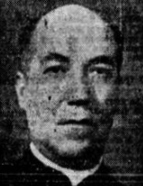

Camargo returned to São Paulo in 1926 and became a canon in 1939, assuming various responsibilities within the metropolitan chapter: he worked in press activities for the archdiocese, served on the Ecclesiastical Tribunal, and contributed intellectually through his writings on the history of the Church in São Paulo. In 1945, the year he became a full member of the Instituto Histórico e Geográfico de São Paulo [Brazilian Historic and Geographic Institute] (IHGSP), Camargo published A instalação do Bispado de São Paulo e seu primeiro bispo [The Installation of the Bishopric of São Paulo and its First Bishop] to commemorate the bicentenary of the diocese’s founding.
From then on, he delivered lectures and courses, published numerous articles in the Institute’s magazine, and presented papers at historical conferences (IHGSP, 1994). He was also made a corresponding member of the Historical and Geographical Institutes of Minas Gerais and Paraná. In 1951, the same year he was named monsignor, Paulo Florêncio da Silveira Camargo founded the Paulista Institute of Religious History and Art. Under the guidance of the high clergy, the Institute published Camargo’s most significant work, A Igreja na História de São Paulo [The Church in the History of São Paulo], between 1952 and 1953. This extensive seven-volume work, with more than 2,700 pages, covered the period from 1530 to 1851. In 1955, História eclesiástica do Brasil [Ecclesiastical History of Brazil] was published by Vozes [Voices], a publishing house also connected to the Catholic Church. The context for these publications was the 4th Centenary of the City of São Paulo, during which the Church made substantial efforts to align its image with the history of São Paulo and Brazil. Camargo served on the organising committee for these commemorations, and he also participated in religious ceremonies as a priest.
A non-academic historian, Paulo Camargo can be described as part of a distinct group within the Brazilian clergy dedicated to preserving the Church's corporate memory, similar to the Bahian monsignor Manoel de Aquino Barbosa (1902–1980) (S. Miceli, Fontes para o estudo da elite ecclesiástica brasileira..., 1984, p. 53). One of the advocates of the view that to understand Brazilian history, one must understand Church history, Camargo drew on Portuguese historiography and authors like Simão de Vasconcelos, Serafim Leite, Miguel de Oliveira, and Fortunato de Almeida for his portrayal of Brazilian Catholicism. He described the Jesuits’ expulsion from Brazil as a tragic consequence of state absolutism under the Marquis of Pombal’s rule. His work presented the Church as an essential force in Brazil’s independence from Portugal, highlighting the role of priests in this process.
This work is financed by national funds through FCT - Foundation for Science and Technology, I.P, in the scope of the projects UIDB/04311/2020 and UIDP/04311/2020.
